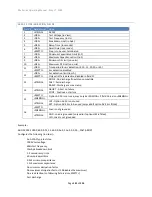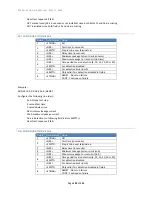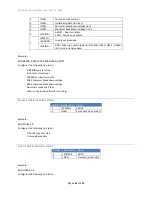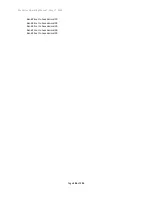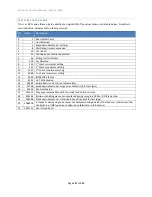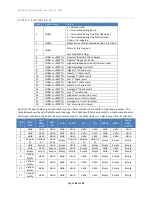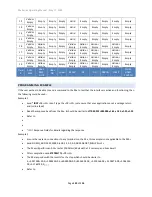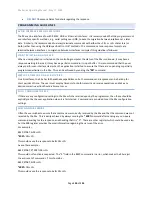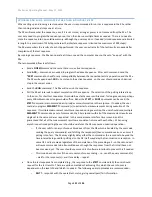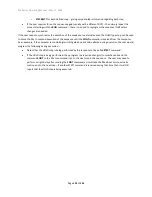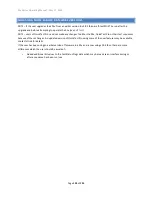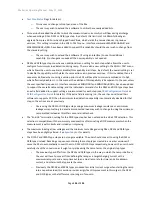
95x Series Operating Manual - May 17, 2022
Page
155
of
155
o
Previously the DCCAP and IRCAP types offered limiting the discharge current to that set for the
ramp. This version allows the user to independently set a maximum discharge current if desired.
•
The ACIR type step is no longer available. Recalling a sequence containing this step type created in an
earlier version will cause the 95x to automatically convert it to an identical ACW step.
•
The local line frequency setting has been removed from the CNFG
–
SYSTEM menu. The commands
affecting that setting (LINE50? and LINE50,<BOOL>) are still available but do
only affect a “dummy”
setting.
o
The user need not alter their software if they were previously using that setting, however these
commands may be removed in the future.
•
A new option has been made available (option HSS or HSS-2) which enables the user to select whether
leakage and breakdown currents are to be detected in the HV or RETURN terminal. Without this option
only the RETURN terminal is used. This enables the
95x to be used to test DUT’s which are grounded.
Several of the test types have been extended to enable the user to select whether the DUT is grounded or
not if this option is fitted.
o
If option HSS or HSS-2 is not fitted then no changes are needed.
o
If option HSS or HSS-2 is fitted, then the user should note that several menus and interface
commands have altered to enable the user to control its usage, and that option HSS or HSS-2
restricts the maximum voltages from the 95x.
•
The specifications for leakage current measurements when performing a DCez, DCW or DCIR type step
with a capacitive load have been significantly improved and settling is faster in these situations. This
yields more reliable low leakage (or high leakage resistance) measurements with capacitive loading.
o
The user may wish to change the test step timing to make use of the improved settling
performance, otherwise no changes are needed.
•
Added the capability of performing two DCW or DCIR ramp phases without any intermediate “gap”.
Previously the user could perform two DCW or DCIR steps using a discharge setting of NONE in the first
step, but there was always a dwell period in the first step which could unsettle a capacitive load during
the overall ramp. This revision also supports setting a zero dwell time for the first such step, which
eliminates the intermediate level dwell period.
o
The user may wish to change the test step timing to make use of the improved settling
performance, otherwise no changes are needed.
•
Breakdown limits can now be set to higher currents than previously allowed.
o
The user may wish to change the test step limits to make use of the changes, otherwise no
changes are needed.

